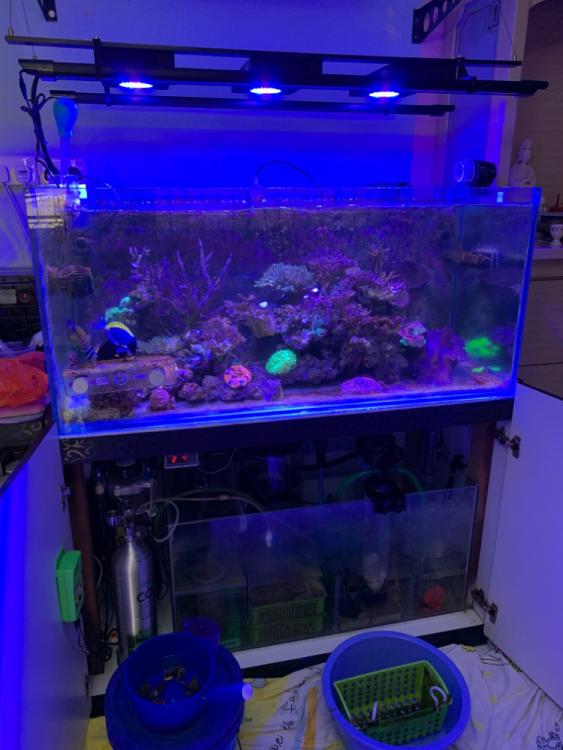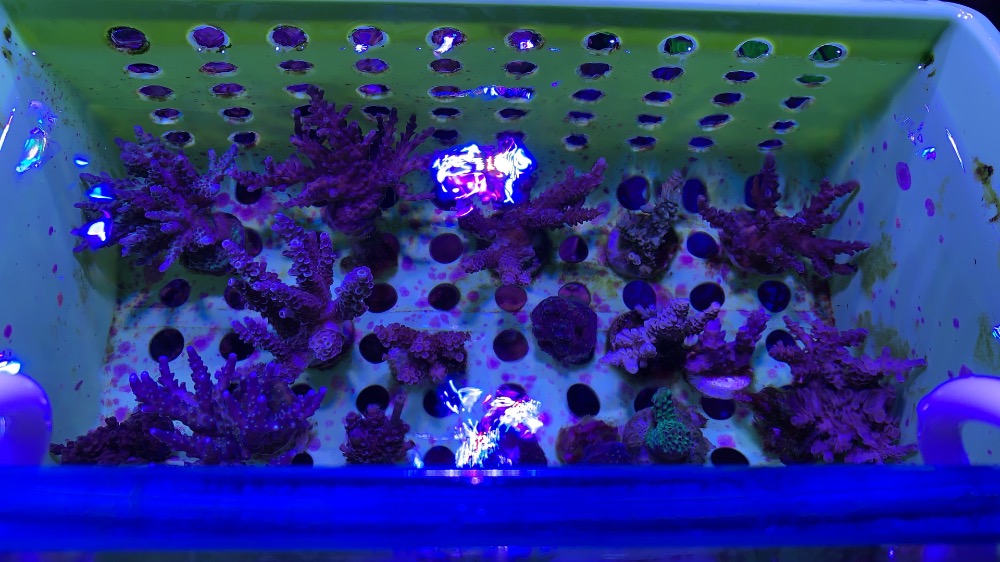Leaderboard
Popular Content
Showing content with the highest reputation since 01/22/2021 in all areas
-
Visite;Www.captainwebgenesis.com Hello everyone, I wish to share this information with the public . It’s advisable not to trade with an individual or a bitcoin investment platform if you are not sure about their reputation. A few months back, I was seeking an investment opportunity but I ended up being scammed of $187,000 in Bitcoins. I was depressed and disappointed in myself until an article popped up about Captain WebGenesis, a cryptocurrency recovery company that helps scam victims get back their lost or stolen Crypto, and to my surprise, they were able to recover almost all the funds I had lost. I’m sharing this out of excitement as I know there are many people out there who must have had an encounter with these swindlers. You can reach them on (Captainwebgenesis@hackermail.com)8 points
-
Nice gesture but hopefully you do your due diligence. Some reefer here flips coral for earnings.7 points
-
I've started to journey into the microscopic world of the reef tank. Invested in a good microscope with a camera hooked up. Its great to be able to pinpoint issues and apply the correct fix. For example : Is this dinoflagellates or diatoms? What kind of algae is this? Or be able to identify various parasites. For a start, many have experienced brown jelly disease on hammer & torch corals. The common advise is to discard it immediately as the brown jelly can spread. Another common advise is to dip the coral with coral dip or with iodine to disinfect it. This post hopes to give some insights on what works & what does not. Under the microscope, the brown jelly are actually a huge colony of a type of protozoa (single celled microscopic animal) known as ciliates. They are characterized by the presence of hair like organelles called cilia. Pic from Wikipedia From numerous articles (eg : https://www.sciencedirect.com/science/article/abs/pii/S1385110115300095), the common ciliate associated with coral diseases are Philaster Lucinda & Philaster Guamense Pic below taken by my microscope. The brown bits you see are zooxanthellae. Some have been ingested. I tested some new purchased / store bought hammer corals and a tiny amount of the ciliate are present. Apparently, ciliate are always present in the water but have no effect if the coral is healthy or if the population of the ciliate is small. However, when they colonize in large populations, they attack the weak coral & the infamous brown jelly or RTN occurs. I collected the brown jelly & soaked them in various kinds of coral dips and iodine. Apparently, the ciliates do not die! All still alive! This means that while coral dips & iodine may do well to 'wash' the coral, bits of this parasite are still present and can cause further issues. Possibly that's why brown jelly tends comes back a few days later. In the video below, you will see big colonies of the ciliate. This slimy cloud contains the parasite that can move around to infect the nearby coral. Hence the advise to dip & trim away the infected piece is correct. Of all the products tested, the only one that actually destroys the ciliate is Polyplab Reef Primer. Within 10 minutes, the cilates stop moving (die!) and the cell walls start to disintegrate. And if left for longer periods, it seems to disintegrate entirely (or perhaps it becomes so transparent that I can't see with my microscope) Next step is to understand how to prevent brown jelly or ciliate colonies in the first place.5 points
-
Happy 3rd Birthday Giveaway! One lucky winnner wins IntelligenceOcean R60. How to participate: 1- Like & Share Post 2- Post a pic of your hammer garden under comment section. Entries start 17/3/21 - 21/3/21. Our team will pick one [emoji256] winnner and annouce on 26/3/21. *** -1 entry per reefer -Not eligible for personnel associated with lfs. -In case of any disputes, we rms team will make the final decision. Rem to follow us at #reefmarketsg • • • #RMS #supportrms #sgreefsupplies #sgreefclub #allmymoneygoestocoral Sent from Singapore Reef Club mobile app5 points
-
After lurking the forum for a few years, allow me to share my reefing experience. This is my aquarium-in-progress. ACROPOLIS Acro: 1. (greek) the highest point; 2. Acropora, a genus of coral -polis: (greek) city This aquarium draws inspiration from the famous Acropolis of Athens. This scape reminds me of the majestic ruins on top of the acropolis, the meandering path climbing upwards, as well as the sprawling civic districts at its feet. Coincidentally, the name also can be interpreted as acropora city, a good fit of the corals home to this aquarium. I did not document the build and the transitions, but I would like to share my experience here. I'll start with the overall visions i have for this set up. My aquarium should be balanced-minimal. There must be large open space balanced by dense growth and complex structure. There must be large organisms balanced by fine details. Although minimalist is the characteristic of this aqua-scape, the balance is the soul. The feeding tube on the right side and the labyrinth on the left encourage fishes to adopt a more natural behavior. They will take advantage of the shelter in the main scape, only to venture out into open when opportunity (feeding) arises. This creates a interesting shifts in dynamic. The rock work is the skeletal foundation of the main "acropolis", but I want organic growth to obscure most of it. eventually the rock should be almost invisible. The tank is placed in the corner of the living room. Therefore it offers two-sided view. The aqua-scape needs to be well proportioned for both view; there should also be minimum clutter of equipment on the viewing side. Uniformity is over-rated. I want to direct flow at where flow is needed; shine light on where light is needed, give food to where the food is needed. Efficiency is the name of the game here. My reefing decision needs to be deliberate. if a hardware is setup in a certain way, I must be able to justify how it helps my tank to do better. This aquarium is still work-in-progress. Thank you for reading, and feedbacks.4 points
-
4 points
-
4 points
-
♡ xyzreefer giveaway V3 ♡ Theme: Mental health Prize: A certain zoa ♡ Scenario: Suppose you know someone who is going through the worst time of their life and facing stressors from: 1) School AND 2) Still in the process of healing from a process AND 3) Needing to deal with life AND 4) still trying not to fall face first into the toxic spiral AND 5) Is thinking of giving up on everything If there is something(s) you'll like to advice / say to them what would it be ♡ Tele(ohmyxuan) / FB message me / whats app (9zerozero81809) your response. PS: 1) Collection at my free time @161042 only. 2) All responses will be kept strictly confidential and anonymous 3) I will take time to read all responses properly 4) If you just need someone to talk to, you can pm or text me at the same platforms even if you dont need the corals. 5) Help share the love ♡4 points
-
Good day reefers, well time really flies and my reefer 350 has reach the 3rd year milestone. Really enjoyed this journey and been thru many ups and downs, more downs i would say lol [emoji23]. Killed tons of corals and waste alot $$ but which hobby dont waste $$? Reefing is a very rewarding hobby and it will never cease to be boring as reef tank always got daiji one, be it equipment failure, pests, unknown coral/fish deaths, dreaded brown jelly disease, Famous STN and RTN bros, Regardless of all the problems, seeing your fish and corals doing its thing is like having a piece of mother nature in your own home, really takes the stress away and helps to calm me down. Some pictures (with orange filter) to mark this milestone, hopefully many more milestones to go! [emoji4] Thanks for reading and happy reefing! Sent from Singapore Reef Club mobile app4 points
-
I don’t recall ever seeing a single photo in any of your SELL post, past 1-2 months. Photos will make the sale easier. You have problem posting photos?4 points
-
4 points
-
4 points
-
One thing I love about this hobby is the constant ability to learn something new. However, there are also occasions where it is worth learning something old. Techniques that reefers used historically but are in dire need of resurrection, forgotten heroes (or heroines) so to speak. As such I wanted to share a few topics on reefing that I hope you find useful. So let's start the ball rolling with the first forgotten hero... Sulphur Denitrifiers. For the life of me I just don't understand why Sulphur Reactors are not more popular after all they are possibly one of the easiest "set and forget" ways to reduce nitrate. Just throw some yellow Sulphur Beads (about 1kg of Sulphur per 500L) along with some calcium reactor media (e.g. ARM) into a reactor and add water. That is it. Best of all is you can leave it for a year or slowly flowing denitrified water back into your system. So simple. Ok there is a little bit more. yes, it is best if you use a recirculating reactor, but honestly a normal reactor will work well too. After filling and adding water perform an initial purge of the reactor chamber into a bucket, you dont want sulphur dust in your system. Next step is you will need to dial in the flow. At the start it should be a constant drip drip drip each second. Over time you can increase the flow. To dial-in the correct flow rate test the effluent for nitrates regularily over the next couple of weeks and if nitrates are too low (plus to avoid the smell) increase the flow rate or remove some sulphur media. However, if the nitrates are still too high decrease the flow or add some more sulphur. It will take a couple of weeks to kick into action as the bacteria starts to populate, but once you have it dialed in, it will operate in an equilibrium growing bacteria in relation to the available nitrate. The media can last well over a year with little to no maintenance, just check for clogging (tip... Don't use any sponges in the reactor). Did I mention sulphur media is also fairly cheap I saw some@aquamarin for $8.80 a kilo. Ok sounds too good to be true, easy, cheap and works for ages. Well the downside is that your Alk will take a hit. Hence, the recommended addition of the calcium reactor media into the reactor to help buffer against that reduction. But you may need to up your alk dose. Also at the start (for a day or so) and at times the flow is too low there is a tiny little smell. But I simply blame the dog Haha. Sulphur reactors are so easy to set up, Yet it appears there are few reefers enjoying their delights and even fewer newbies aware of the pure ease and simplicity and money savings a sulphur reactor can bring. For more info I suggest you visit the interweb, and lookup 'Parker's Reef Sulphur' on youtube. As he has a good introduction to Sulphur Reactors amongst many other goodies.. Enjoy! (If there are any forgotten heros you feel need mentioning PM me). More forgotten heroes shortly. Sent from Singapore Reef Club mobile app4 points
-
Starting a new thread journeying into the microscopic world of our reef tanks. Not all images are mine. But will also include filter/coral/wool samples that cross my path. Hopefully this thread will be a useful reference to shed light on issues we see in our tanks such as algae or even fish parasite issues. And to encourage discussion about the right treatment once we identify what it is under the microscope. To the naked eye, diatoms look similar to dinoflagellates but are actually very different under the microscope. The treatment path is also different. Applying the wrong fix will only results in prolonging the issue or even create new issues.4 points
-
A couple more pics of diatoms They are in fact beneficial and always present in a balanced tank system. According to Wikipedia, diatoms in the ocean generate 20% of the oxygen produced on the planet each year. Diatoms are a form of photosynthetic single cell phytoplankton. While some reefers hate it, here are some fun facts on diatoms Diatoms take up silicic acid from the water to form a silica shell (a form of glass). Sources of silicon : silica sand/quartz sand (from the beach), tap water, marine salt mix Diatom chloroplasts (i.e. plant cell organelles that convert light energy into chemical energy via the photosynthetic process) are yellowish brown due to the presence of photosynthetic pigments such as chlorophyll (green), beta carotene (orange), and fucoxanthin (orange) Cell walls made of silica (glass). Their exoskeleton are made of 2 halves that fit inside one another perfectly. The walls are called frustules and have 2 main shapes – longish shape (called Pennate) and disc/cylindrical shape called centric) Diatoms are beneficial – they can outcompete the growth of other types of algae. And prevent HAB (Harmful Algae Bloom) – green water, cyanobacteria bloom, dinoflagellates Copepods eat phytoplankton (including diatoms) which in turn feed the fish Note that once silicates are depleted, other forms of algae can appear. Hence a good balance is required. Silica are in fact critical for the reef aquarium. Normal levels are 0.02ppm - 2.9ppm. Marine organisms that use silica : Marine sponges (beneficial filter feeder) incorporate silicates in their structure. Some mollusks (snails) have radula (teeth) to scrape off algae from rocks/glass. These teeth contain substantial silica. And of course, diatoms - benefits mentioned above. Credit : Pic from https://socratic.org/ In any case, if diatoms are a bother, especially when silica levels are elevated beyond the normal levels mentioned earlier, consider the following : 'Export' the silicates by siphoning out the diatoms when they form. Don't just stir or turkey baster it off the rocks/sand bed Use aragonite sand instead of quartz/silica sand Avoid using tap water. ICP test of tap water at Bt Batok has 1.12ppm of silicon. Use a good RODI filter to prepare water for water change & top up Use resins such as Rowaphos (and probably other similar products). These remove plenty of phosphates but also some level of silicates.4 points
-
4 points
-
Picked up a frag from fellow reefer recently. All the best on your future plans. Here it is in my tank. Hope I can maintain the lovely colors. Some other pics taken yesterday. Most with yellow filter. Bali shortcake (From Coral Fanatics SG) Divaricata (From Coral Fanatics SG) Space Invaders Pectinia (From Coral Fanatics SG) Horrida (From Reefing Reality) From reefer (originally from S5) Love the colors of this branching hammer (From Coral Fanatics SG) Holy Grail torch Fiji pink birdsnest4 points
-
There could be various reasons. But one likely one is that it is bleaching due to excessive light. Gonio generally prefer low light conditions. From the picture, it seems to be placed at a location that's bright enough for SPS/Monti. Perhaps its too bright. Would suggest to bring it to a more shaded spot.4 points
-
Hey reefers ! Help us share our First ever LIVE event & win! 10 x $30.00 ABA Store voucher will be up for grab when you LIKE, SHARE and comment "Done" on the comment section on our FB page HERE ( SR Facebook page ) Register for the event here=> https://fb.me/e/2bTAM8z4D ** T&C apply ** Winner will be randomly selected and announce during the start of the event itself.4 points
-
Hello! I am going to give away a shallow reef tank built by CRA. Tank has been used for a few months but was decommissioned after which it is in storage. Condition 9/10. Recent water leak test has been carried out - perfect condition. Collection at Katong. Please arrange for own transport. PM me for more details.3 points
-
Achilles Tang 15-17cm (bought from Iwarna in April 23) $900 Atlantic Blue Tang 15-17cm (bought from hobbyist in March 23) $350 Yellow Tang ~10cm (bought from hobbyist in sept 22) $750 Powder Blue Tang ~10cm (bought from The reefer in Jan 23) $70 (Reserved) The above have gone through copper treatment. Coral beauty ~6-7cm (bought from hobbyist in March 23) $80 Clarkii clown ~6-7cm (bought from The reefer in Jan 23) $10 The above have gone through observation in QT. All fishes are on FM pellets / Nori / Mysis. Interested pls WA 973zero 793zero for photo / video Sent from my iPhone using Tapatalk3 points
-
3 points
-
Is this Indian gold ring tang or Hawaii kole tang? Yellow eye tang outside sell around 20-30 dollar only Sent from Singapore Reef Club mobile app3 points
-
Bought from haiyang $1xx 1 year ago. Pic below from haiyang. Pic above is the haiyang BTA from my tank, split 3 times. Letting go $30/piece. Opens nicely, around 7-10cm. Stable piece, split and kept for at least 6 months. Selling as I got another BTA colour variant! I have 2 anemone pots, so would like to free up 1 for the new BTA colour variant! Collection at 738087. PM me! Or tele/WhatsApp at 8one23 7four98. Sent from my iPhone using Tapatalk3 points
-
Decomming my tank and heavy heartedly selling my last fish, a healthy Picasso Clownfish $88, negotiable for serious buyer, I'm trying to find good home for him. Collection is at bukit batok. Thanks3 points
-
Hi reefers, To those who owns a Red Sea Reefer tank will know how painfully annoying the diaphragm downflow valve can be when detritus and mulm clogs the valve. I spent lots of time and effort constantly tuning the valve and at times, the valve can get stuck and become very difficult to make minute changes. I decided to change the stock valve to a proper gate valve, do note that the sizes are applicable for RSR170, RSR250 & RSR350 only, bigger RSR will likely require different size pipes. The parts required will be: - red sea reefer return pump adapter - 25mm gate valve - 25mm PVC pipe - 25mm PVC elbow x2 - 25mm PVC screw adapter - PVC glue - PVC cutter The RSR return adapter can be bought from red sea dealer and i purchased mine from RMS. https://reefmarketsg.com.sg/product/redsea-sump-pump-return-connector-16mm-for-rf-nano-170-250-350-me/ For the other parts, i believe Madpetz carry most of the parts but i bought all of those from taobao. The first step is to use a spanner to unscrew the return pump fitting from the adapter. Next, replace the O-ring from the Red Sea return adapter onto the PVC screw adapter, remember to apply a layer of teflon tape to prevent leakage. Screw the 25mm PVC screw adapter onto the red sea adapter. Next, measure, cut and dry fit all of the piping to ensure the replacement fits well before glueing. Next, apply a layer of PVC glue on to the PVC pipes, i usually apply a generous amount and wipe off any exccess. Remeber to always wear glove when dealing with chemicals! Once all glued and done up, remove the original downflow valve and its time to replace them! Oh and i ran out of the blue PVC pipes so i simply connected some left over PVC connectors to make sure the pipe is below water level in the sump. Replaced and up and running after just 30 mins of drying, usually PVC glue are not real glue but just chemicals that soften the PVC to bond them together, ideally it will be better to leave it to dry overnight but i have not encounter any issue just letting it dry for 30 mins. The gate valve makes minute changes effortlessly, and my experience from the past few days is that it does not fluctuate at all unlike the original red sea valve. My only regret is not doing this DIY mod when i first bought the tank. Do note that this 'tutorial' should only serve as a guide if you want to do the same to your RSR, i am not responsible for any wrong part size purchased or any leakage because of this mod. Thanks for viewing!3 points
-
hi all, decomming my tank already so i have some sps frags to giveaway. red monti green monti radioactive bn pocci digi etc No reserve, fcfs. Pls tell me what you want and when you are coming over to collect. I will be giving them out on a fcfs basis. thank you. Collection pasir ris dr 6. wa me 923 zero zero 8273 points
-
3 points
-
- 48inches x 24inches x 20inches tank with sump and side control panel - ATI Light fixture (10 tubes) - 2 x Orphek (120 Blue Plus) - E series CM202 with Geo media - Gyre XF 350 dual pump - Maxspect ICV6 (Wifi for XF350) - Flipper Glass Cleaner x 2 - Jebao Wavemaker OW-40 x 2 - Vortech M2 (Mobius compatible) - Vortech L1 - Versa pump - 2 TLF reactor (New model, Old model) - Apex Auto Top-up Kit (ATK) - 2016 Apex Controller (2 Ph probe, 1 temperature, 1 Conductivity probe. - Deltec UV Steriliser (39Watts) - 2 China Refugium lights - Self Build in ATS - Skimz ZAR 127 DC Zeolite Auto Reactor - Compressor 1hp Daikin with Drop in coil - Nyos Skimmer 220 - 1 TM Salt unopened Selling all at $5.5k/- Total worth more than $10k. Selling all as a set so please don’t text me for separate sales. I’m not in a rush to sell off all so please don’t low ball. Arrange your own delivery. All equipment are working and my tank is running. Collection @ woodlands Interested pm or whatsapp 96ninenine22five0 Sent from my iPhone using Tapatalk3 points
-
Letting go at $70. Around 12-14 polyps and opens up to 3 inches plus. Each polyp can open to 20cent size and very long tentacles. Collection at 350137. Sent from my iPhone using Tapatalk3 points
-
Avoid these fishes! YES, Avoid these fishes! Here today we will discuss the most popular fish in the trade to be avoided. Given the beautiful color or the fish or perhaps the cheap price, you should always research and prepare for it as the fishes listed might be difficult to keep or difficult to get it fed. One of the most sough after fish ( Achilles Tang ) which belong to Acanthurus family is very susceptible to ich and require good water quality and large swimming space Ich Magnet Tangs are one of the obvious ich magnets, by saying ich magnets means they are easily susceptible to ich. One of the genus to avoid are Acanthurus which consist of Powder Blue, Powder Brown, Powder Black and Archillis tang are the most common fish to be seen in trade and also most susceptible to disease in a Reef Tank. It is not totally impossible to keep this species however you are required to quarantine every single fish that enters your tank from the start and also prepare to dip anything that enters it too because this is to lower the risk of diseases entering your tank. However, it still doesn’t 100% eliminate the chance of this fish getting caught with ich or die. One way to ensure your fish to be healthy and resistant is to feed them well to build up their resistance and ensure fish is fully quarantined before introducing it to your marine tank. Do also take note of the existing tank mate in your system as if it is not properly introduced, they might be aggressive towards each other and being bullied by established fish in the system which might weaken their immune system making them susceptible to develop ich again. Tangs also required amber swimming space and it is only recommended for reefer with 3ft tank and above. Damselfish Affordable, elegant and beautiful as it seems to be, however so note that some of the damsel species are notoriously aggressive fishes to other tank mates, that will attack another tank mate once it is established. If you really like this species you should consider introducing it last (Which maybe seem impossible because we always want to add new stuff), or introduce a bigger size fish after it. Be sure to research on the behaviour of the damselfish that you will be getting to avoid any aggression. Damselfish might do well in a school in the ocean but however, in a small tank, they often chase and bully themself to death as victims of the bullied may find themself hiding and die from starvation. Copperband butterfly Even myself, I love the beautiful white and yellow colours and also the long peck. However, do note that this fish diet is only known to eat copepods and aiptasia. You can train them to eat Mysis shrimp but it will require a lot of patience for that. Impossible to keep? No. But it has really come to how much commitment you can keep this fish with some stroke of luck as well. Once you are able to obtain a healthy specimen, the chance of getting it to feed prepared food will be higher, and you will be rewarded with a beautiful specimen swimming in your tank. Dragonet (Mandarin fish ) Same as a copperband butterfly, their diets in the wild consist only of live copepods and pods that are small enough to enter their mouth. It should only be kept in an established tank with lots of critters for them to hunt in the while. If you keep in a small tank, train them to eat mysis in a small isolation before release or else they will just ignore the food as they are never going to try to nibble on it unless in a confined area. Weird huh. Fortunately, there are captive breed specimen that is ready train to feed prepared food even pellets as well! However, do prepare to pay a little bit more for these captive breed one. Bicolor Dottyback Small yet aggressive. Dottyback is one of the most common fishes in the marine trade that newbies tend to purchase because they look like Royal Gramma from finding nemo. This fish may look gentle and harmless but do not be deceived by its looks, as once settled, they are really really really aggressive in their own space and always tends to bully new tank mates to death. I would totally avoid this fish but then if you really like this fish, do consider introducing it as the last fish without its own kind/body shape with ample swimming space for it. Pygoplites diacanthus – Regal angelfish is consider one of the harder angel fish getting it to feed prepared food in an aquarium environment. Most eat sponge in the wild. Picky eater Angelfish Some angelfish are picky eaters and it could be challenging getting them to eat prepared food in the captive aquarium, as some of their natural diets in the wild usually consist of a wide variety of sponge. Some species not limited to are Regal Angelfish, Multibar Angelfish and Golden Angelfish are the few of the beautiful angelfish that are often reported hard getting them to eat in a captive environment, which often ends up being dead from starvation. I will only recommend to purchase them if they are eating pellet in a LFS or show sign of feeding . PS: Do find out what pellet brand it is eating and get them to mix with what you feeding with. Lastly, other than avoiding the fish, you should also learn about how to pick a healthy fish which I will write on it next time. If you have more fish you wish to bring to attention to avoid, do write on the comment below. Author - @Willy Guccivera Yap3 points
-
Just wanted to share my success on training a Mandarin Fish to feed on frozen food. The frozen food acts as a supplement to allow time for my copepods to breed and not be scavenged by the predator. I will train my Mandarin once or twice a week with a glass jar filled with mysis and bloodworms alongside with pellets. My Mandarin surely can't resist the temptation to check out and explore the gold mine.3 points
-
3 points
-
My friend printed some maxspect biosphere rack for me to organize my bio media.. managed to fit 5 x 2kg of media in total.. Did some piping changes to the ATS too.. If anyone wanna print the rack can PM me.. he will be selling them at a low price.. Sent from my iPhone using Tapatalk3 points
-
3 points
-
3 points
-
Letting go some digitata frags. If you wanna pay, its a bottle of Coke Zero. Lol. Collection @ Punggol. Sent from my Redmi Note 9 Pro using Tapatalk3 points
-
I’ve been using red sea salts from day 1 for my red sea max nano tank. I finished off a 22kg bucket of the coral pro salt and then switched to blue bucket salt and I’ve been using it for more than 1 year now. I started my tank as a LPS reef tank 2 years ago, I was very happy to use the pro salt. As a beginner, I didn’t use a dosing pump. Thanks to pro salt’s elevated level of foundation elements and high alkalinity, with 10% water change every week, I was able to keep up the parameters and my LPS love it. I can easily manage my tank without a dosing pump back then. After the first year, my tank was mature and I decided to put some SPS. With the increasing numbers of SPS, I found out that I can’t keep up the parameters just changing water every week. I started to use a dosing pump and I decided to drop my alkalinity level from 12 to 8 for the mix reef system. That’s when I switched from red sea pro purple bucket to red sea salt blue bucket. I have to say that I am impressed by the quality control of Red Sea. My test result always matches https://www.redseafish.com/my-batch/ results. The salt is easy to dissolve and mix. My sps are showing great growth. I am very happy with the salts.3 points
-
The 125G is just over a year now. Here's a FTS of the reef at 12 months. Being sps dominant, stable water parameters are a must. Ample light and flow too. I try to keep things as simple as possible. I run the Balling method and auto dose the major and minor elements. Aside from that, I have filter wool replaced weekly in acrylic sock holders, a large protein skimmer, and a refugium with chaeto that I prune monthly. There's a small 13W UV pump in the sump as well. 10% weekly water changes. I introduced beneficial bacteria from the start to get the tank seeded and cycled. Regular dosing (every other week) of bacteria helps to keep nitrates and phosphates in check too, especially when bioload is elevated. Auto water top-up is gravity fed and controlled with a float valve. Fish are fed a pellets, flake, freeze-dried black worms and/or nori once or twice daily. Corals get amino acids.3 points
-
3 points
-
3 points
-
Thanks! Pause from my equipment updates and a post on a current “photoshoot” of my display and man cave! Sent from my iPhone using Tapatalk3 points
-
Test the Un-testable One core challenge of reefing is to simultaneously provide (inorganic) nutrient poor water, while provide ample nutrition for reef animals. Nutrition poor water, that's easier to test and manage. With competent range of test kits available, we can have a good grasp of the (inorganic) nutrient level in the aquarium. Should the level deviate from our preference, there are many ways to correct the problem. Nutrition, however, is a much greater mystery. Other than when we add food into the aquarium, we know precious little about amount of available food in the system. How long does the added food last in the aquarium? Does the animals only get to feed for 30 minute a day? If we can answer these questions, then we can confidently keep nitrate and phosphate at near zero levels, while ensure different type of corals can thrive. Turns out, we can test it. The Organic Test The test kit in question is not made by any commercial vendors, but nature itself. Sea fans. Sea fans are non-photosynthetic, and rely on capturing planktonic preys from the water column. In the presence of suitable food, the polyps extends rapidly. When the food becomes scarce, the polyps retracts. The contrast is obvious, and the response is rapid. In my aquarium, zeostones are agitated every hour to dislodge mulms for export and feeding. When that happens, within a minute or two, these sea fans will have their polyps fully extended. They remain this way for about 45 minutes, before the polyps started to retract. Until the zeostone gets churned again, and the cycle repeats itself. So I would infer that in my aquarium, corals have useful amount of nutrients 45/60 of the time. This also tell me that corals can get significant amount of energy need from feeding. Then I will have the confidence to drive nutrient even lower. Spider sponge showed some growth. Hopefully it confirms the good level of food in my reef. Use filter feeders as test for nutrition. What do you think?3 points
-
Cause related to DOC may be hard to prove without controlled experiments & proper equipment. What I have is anecdotal data which may not be able to demonstrate root cause or nail down to the factors affecting the result. Bacteria is a new topic & am keen to explore more. I did notice 2 incidences of massive SPS RTN (really overnight) several days apart. A slimy cloud was observed just above the rocks. Sections of various SPS colonies in contact with the slimy cloud had the flesh peel off overnight. Everything else above it was OK. In both incidences, the tank were fed with Ocean Nutrition Oyster Feast the night before. Don't get me wrong.... Oyster Feast is fantastic food for the tank. But this bottle went bad -> And hence I was actually dosing massive ammonia laden liquid onto the corals. Once the cloud was turkey basted away, the RTN stopped. Coral did not recede further. I mention this here to highlight the importance of ensuring you feed the freshest food possible. I noticed something odd on this bottle of Oyster Feast. Whenever the cap was popped open, there was air gushing out (like opening a coke bottle). I didn't recall this in previous bottles used. I supposed that it'll stink of fishy stuff if it had gone bad. But instead it smelt a little sour. I thought it was odd but continued to use it because good money was spent of it. (just a week old...$30 bottle of food). After 2 incidences, I put some oyster feast under the microscope. 2 observations : 1) Bubbles continued to form between the 2 layers of glass slide. Some kind of gas (CO2? Nitrogen?). The drop of oyster feast is fermenting. 2) The liquid was quite clear. Very tiny bits were present but most of it was liquid. It is very different from microscopy pic of what it should look like. My conclusion is that the food had gone bad. The addition of this increased the level of ammonia / DOC, arising in a cloud of ciliates. Some reefers may refer this as 'bacteria cloud' which in reality is a bacteria layer loaded with ciliates.3 points
-
Equipment looking to let go. Black hydra 32-$400 (bought mid October 2020, full box+receipt) 2016 apex- comes with energy bar, ph & temp probe, auto feeder, ( no display unit). Those of you who wants to try out apex but don't wanna make a hefty investment, good place to start. $350 Deltec 1500(non DC skimmer), newest model -$350 All these items have been tested and are 100% working condition( welcome to test before collection). Only listing those that I would wanna upgrade down the road once new tank is up. Unlisted equipments, pls do not enquire. Thank you. Sent from my SM-G965F using Tapatalk3 points
-
Went through the very dreaded task of rinsing the sulfur reactor last weekend. Saved up 3 buckets of tank water during water change to rinse the mulm off the sulfur beads. Nevertheless, the reactor needs to go through the cycling process again (hopefully shorter cycle) In the process, the ceramic shaft of the pump was found to be broken. Good thing a spare was available in my stash of spare parts. A good time after that to put up the hammock & relax. From Airmocks : https://www.airmocks.com/3 points
-
Seem not too long ago when my tank is still flourishing. Due to a little mishap of dosing dino x on a prolong period. Almost 30% of my corals is wiped out and all my corals are super browned and stressed . Lesson learnt. “Do not continue to dose when dinoflagellates has been cleared.” Trying to play safe with the mentality of eliminating dinos fully doesn’t work here!! A small percentage of my corals, mainly frags were offloaded to a friend to help temporarily house it. And majority of my sps colonies also sold. I decided to decom for now. Thus bringing a end to my 5yrs old 4ft bean animal tank (My Reefing Chronicles 2). Hopefully, I will come bk stronger and do look out for my new tank build in 2021!! Also do look for my other post for balance sale of livestock (corals and rocks, fishes & equipments will be port over to new tank when comes). Thanks and stay safe, everyone!!3 points
-
Just sharing an article from reef builders which i find interesting and challenge our current understanding. Might be an answer to why some LPS recede without any reason.. https://reefbuilders.com/2020/05/28/the-myth-of-lps-corals-living-in-dirty-water/ Sent from Singapore Reef Club mobile app3 points
-
Agree with the points above about keeping temperature below 30degC. My experience with non chilled tank : Can keep some more tolerant zoanthids in such conditions. Some will melt. Can keep green star polyp (GSP) Can keep forest fire cloves Cannot keep Purple cespitularia You can see some pictures in this post : https://www.sgreefclub.com/forum/topic/142862-my-slice-of-nature-part-3/?do=findComment&comment=12980083 points






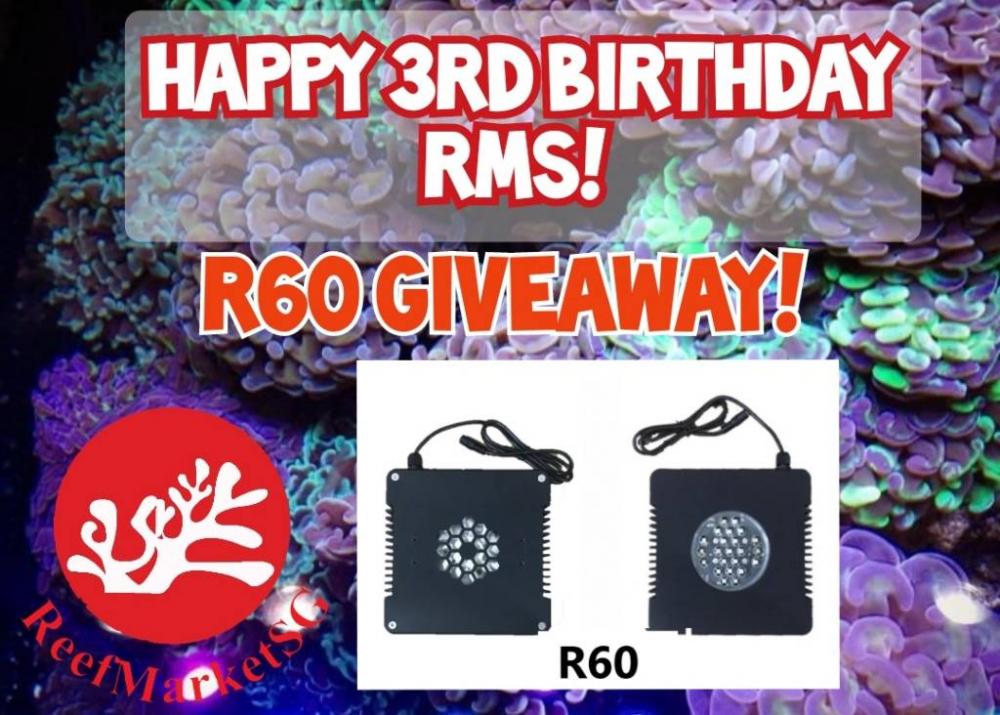
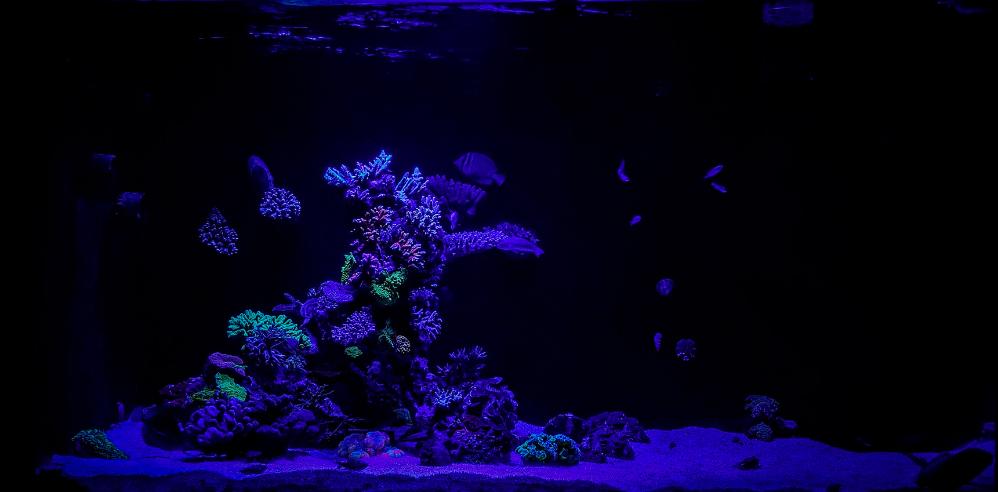


.jpg.c0968554c950e75042d911bfacdd42c6.jpg)

.jpg.0a40c6b6baef50e25f6b5bc9ccdc3528.jpg)
.jpg.01d37f9c47e3e800d25bbd48c46cd663.jpg)
.jpg.e4e209add4a34a6b87b3f5ef4a1ecb99.jpg)
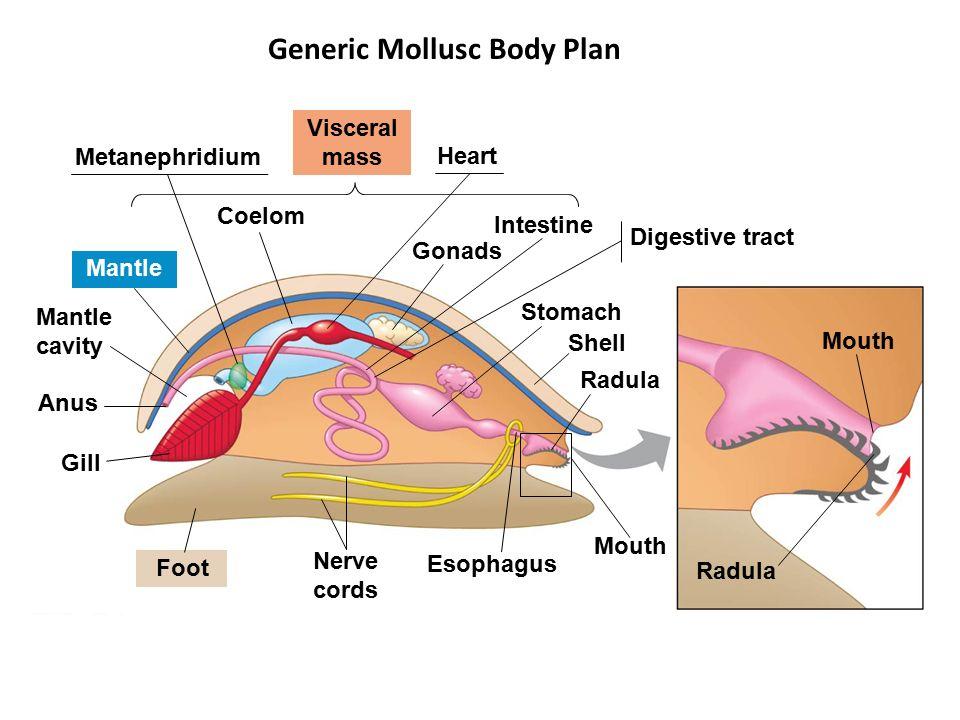

.png.1c76576d04a99c38c9b9b604fbf43fd3.png)
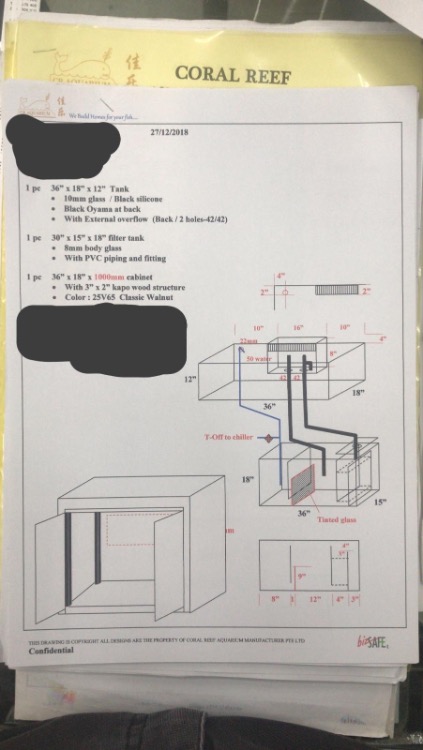
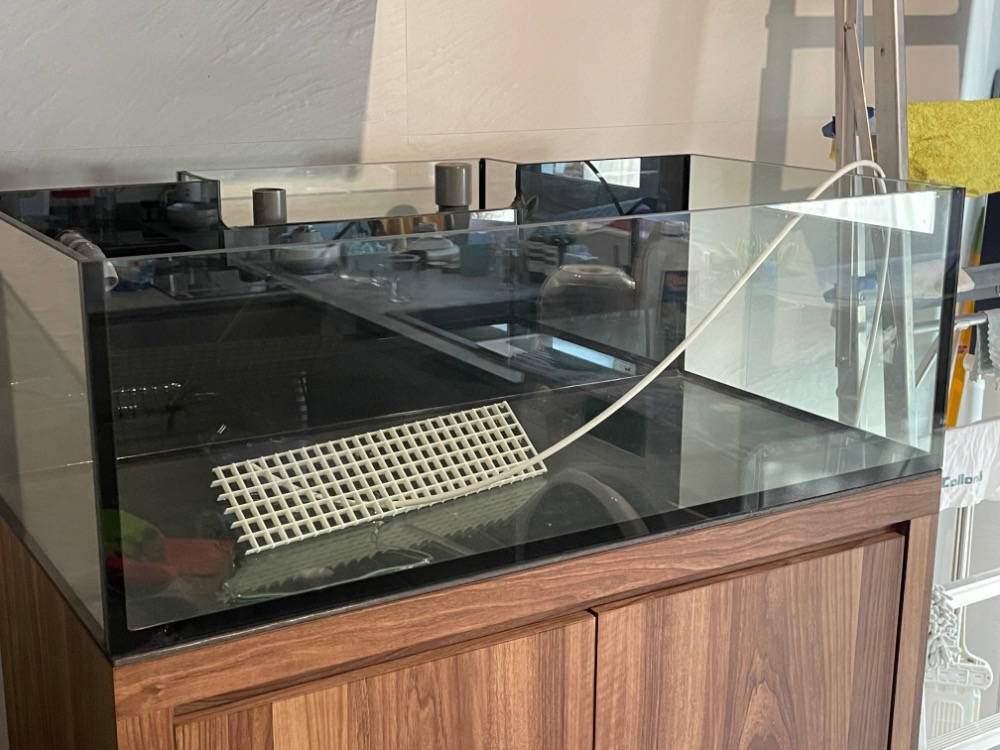





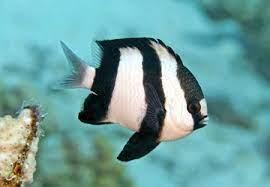

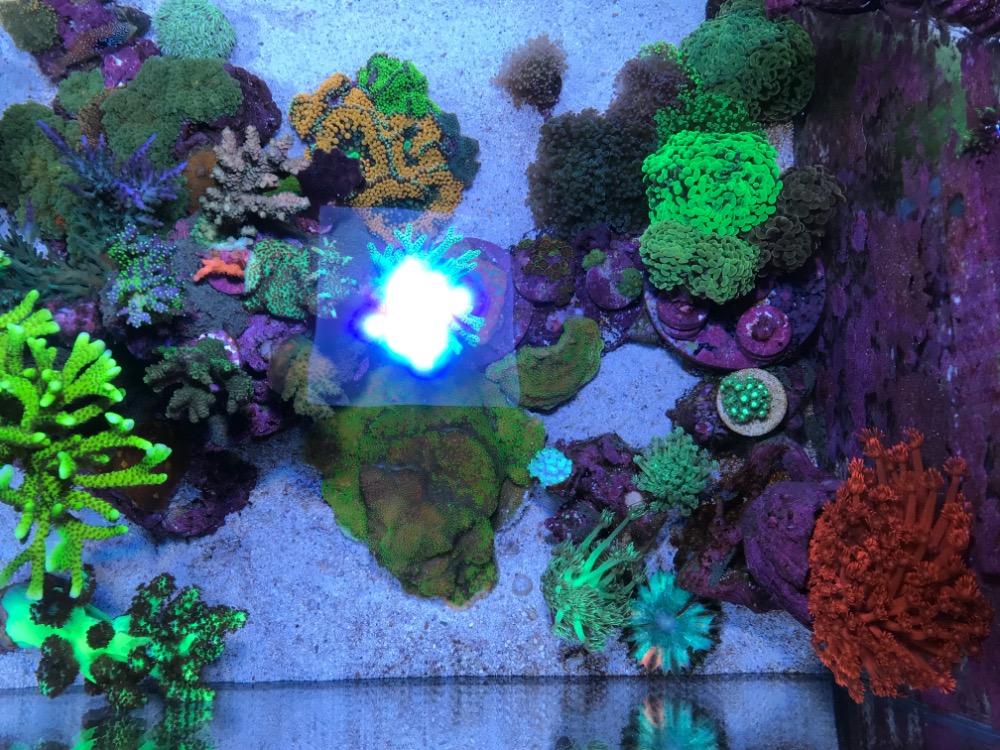
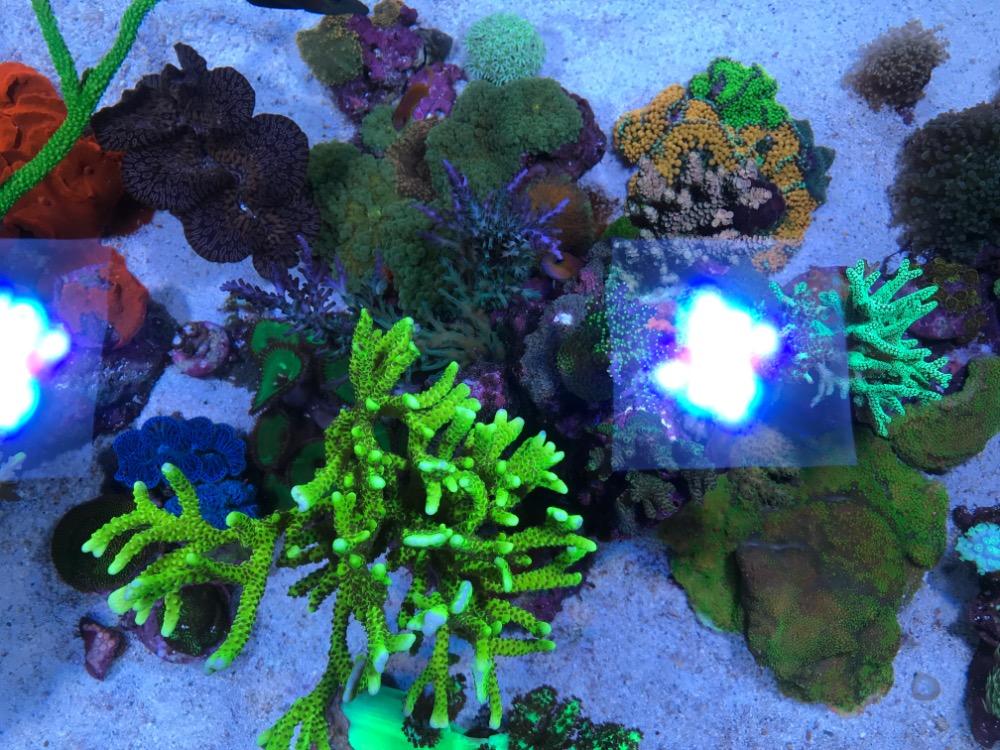
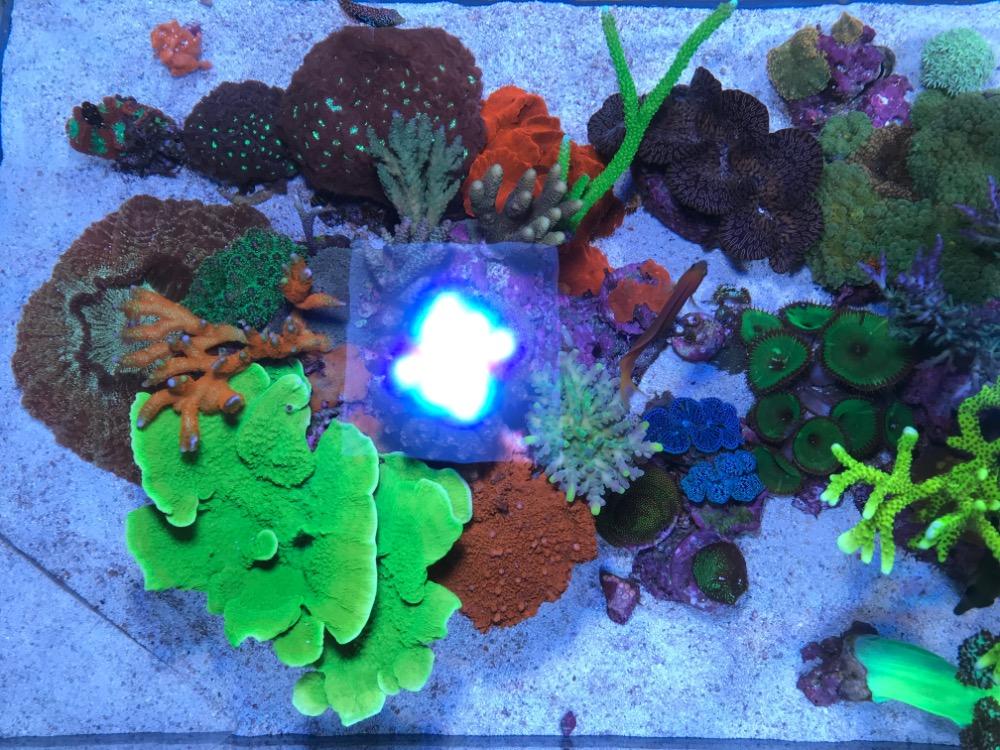

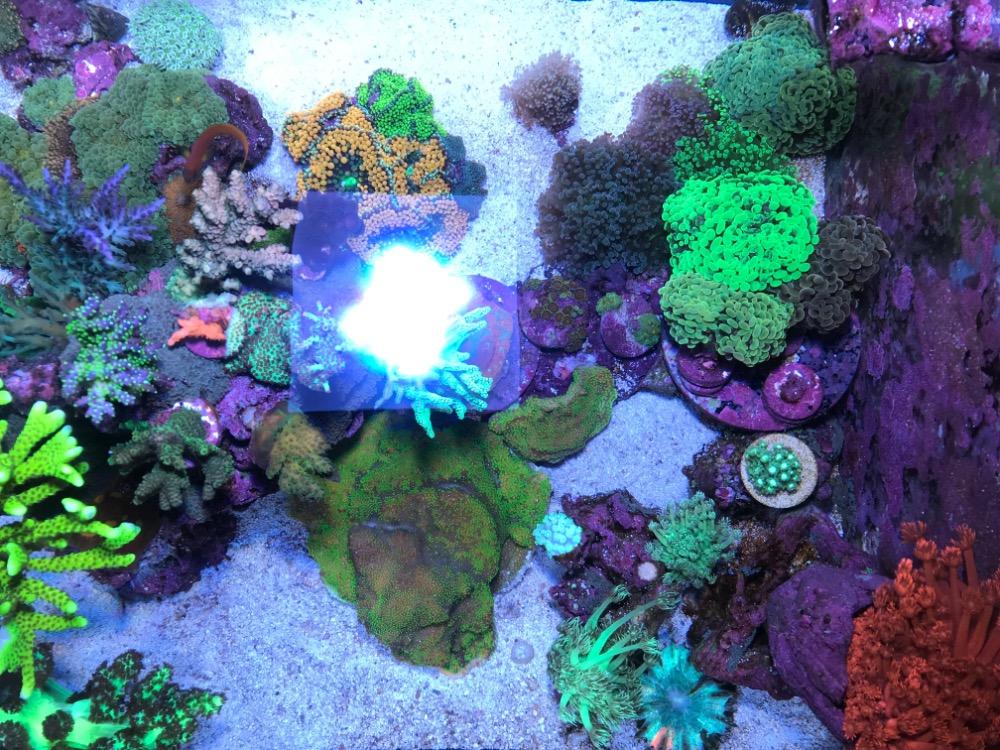
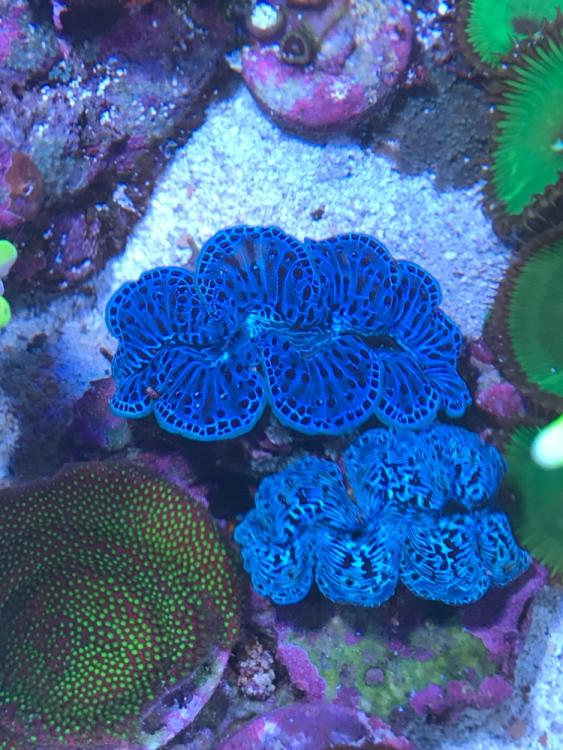
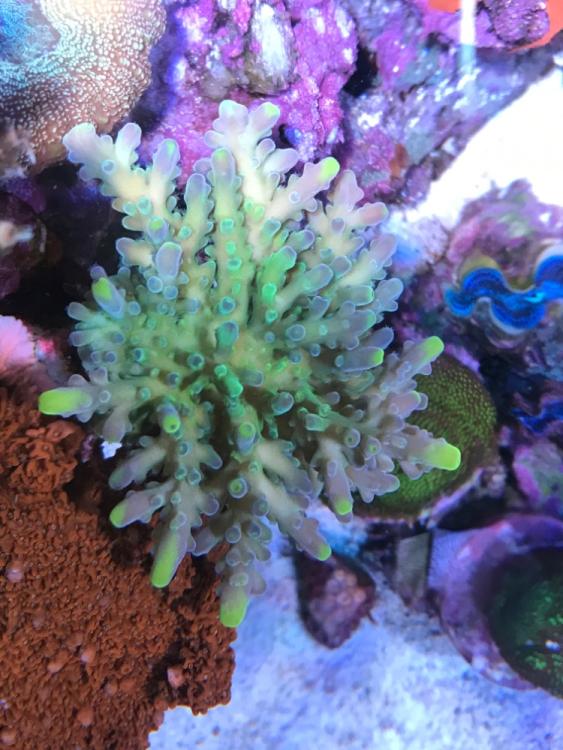
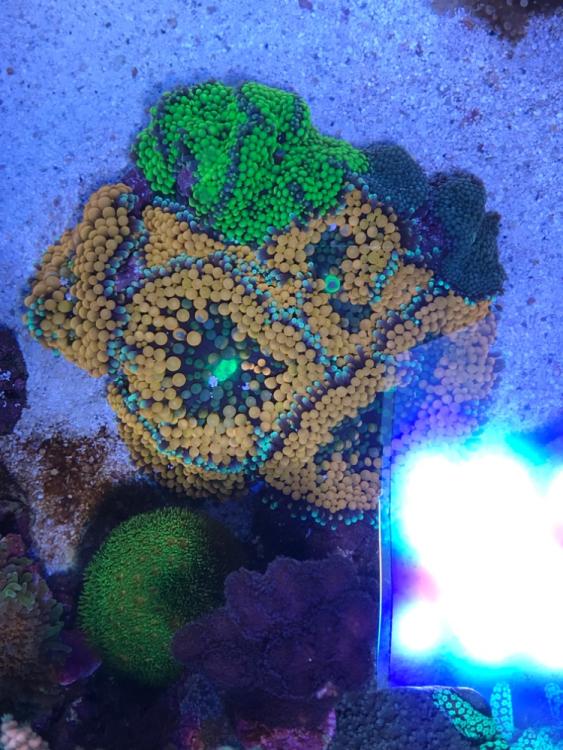
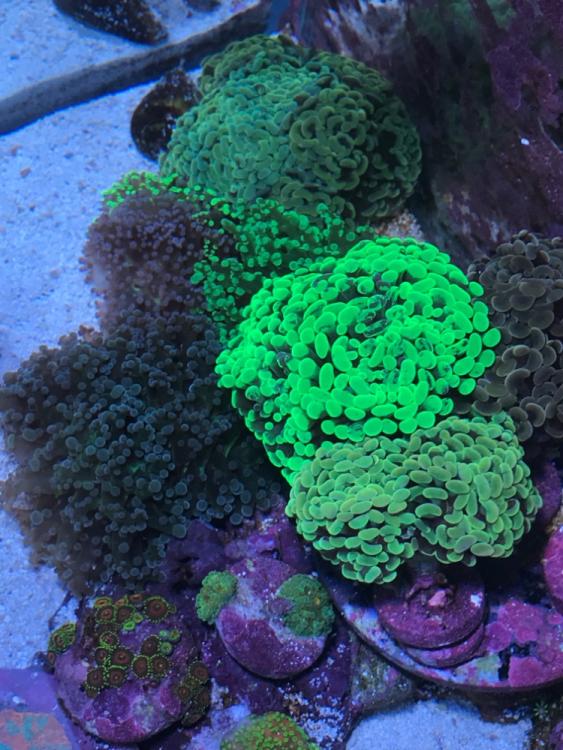
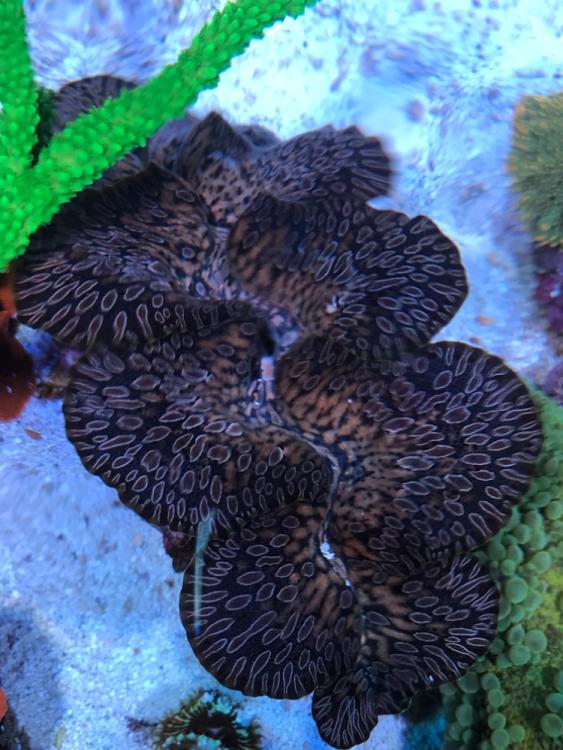

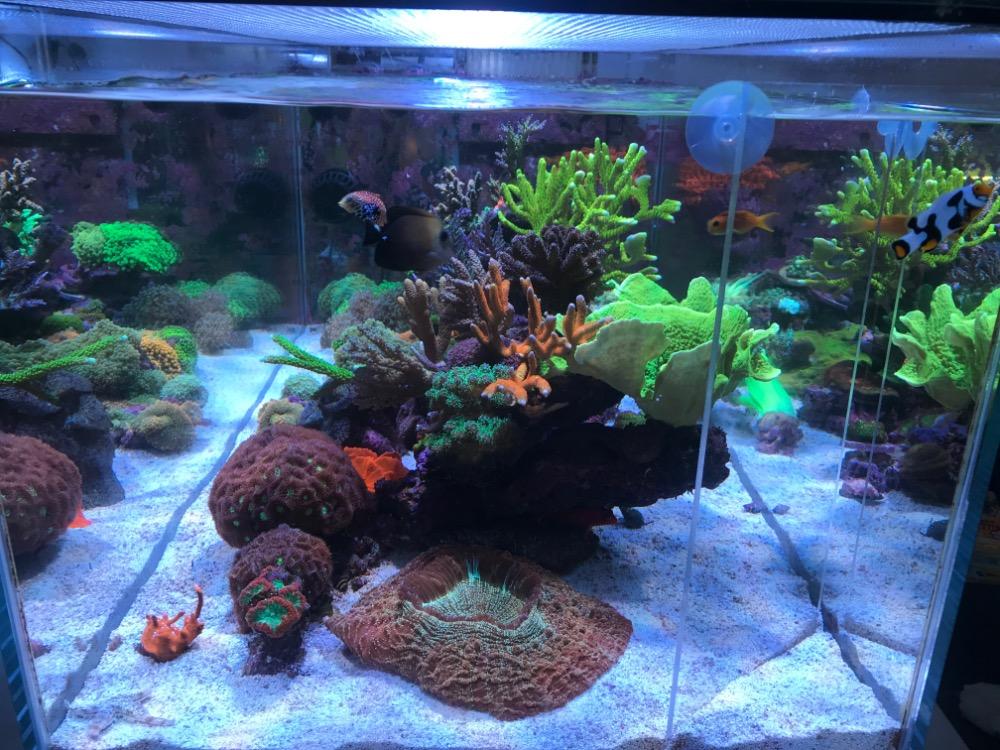
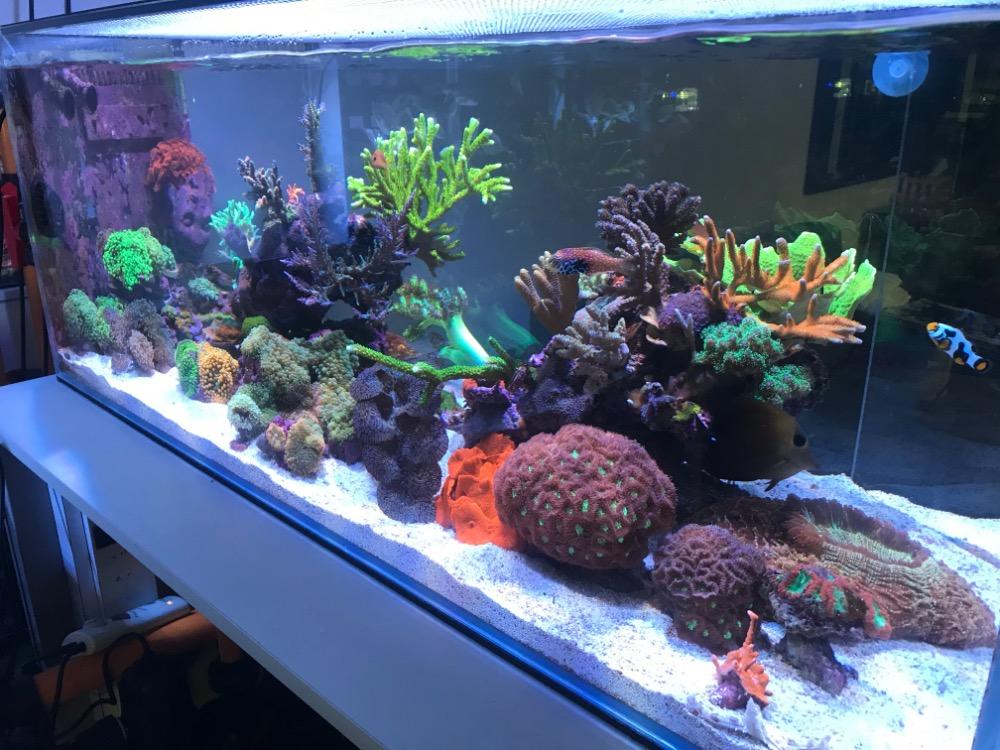
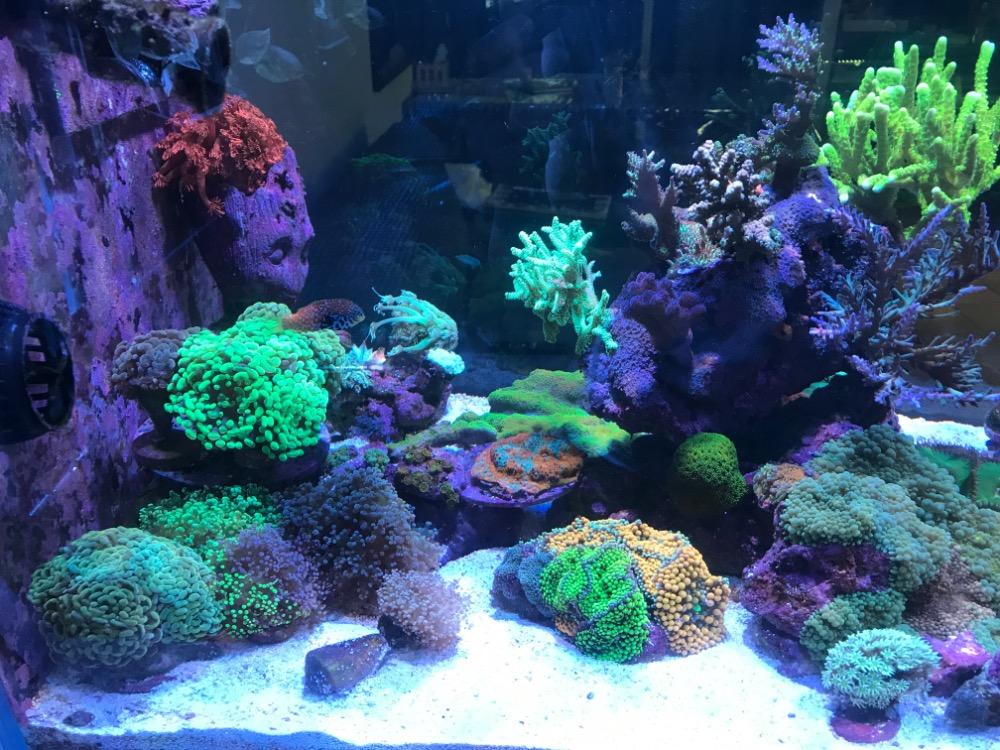
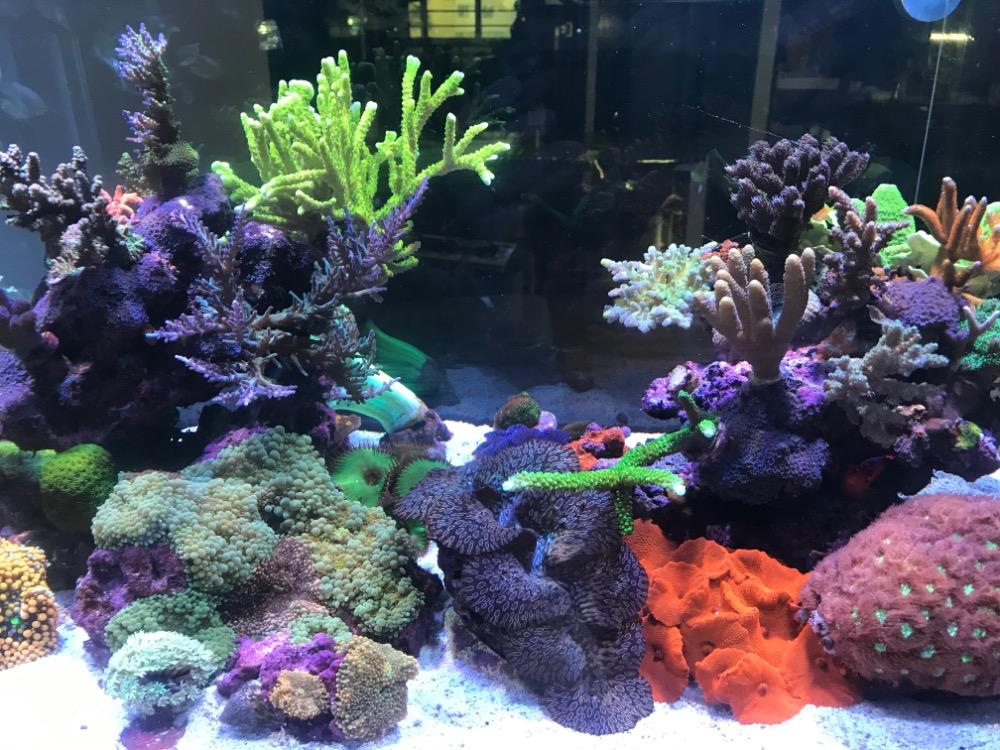
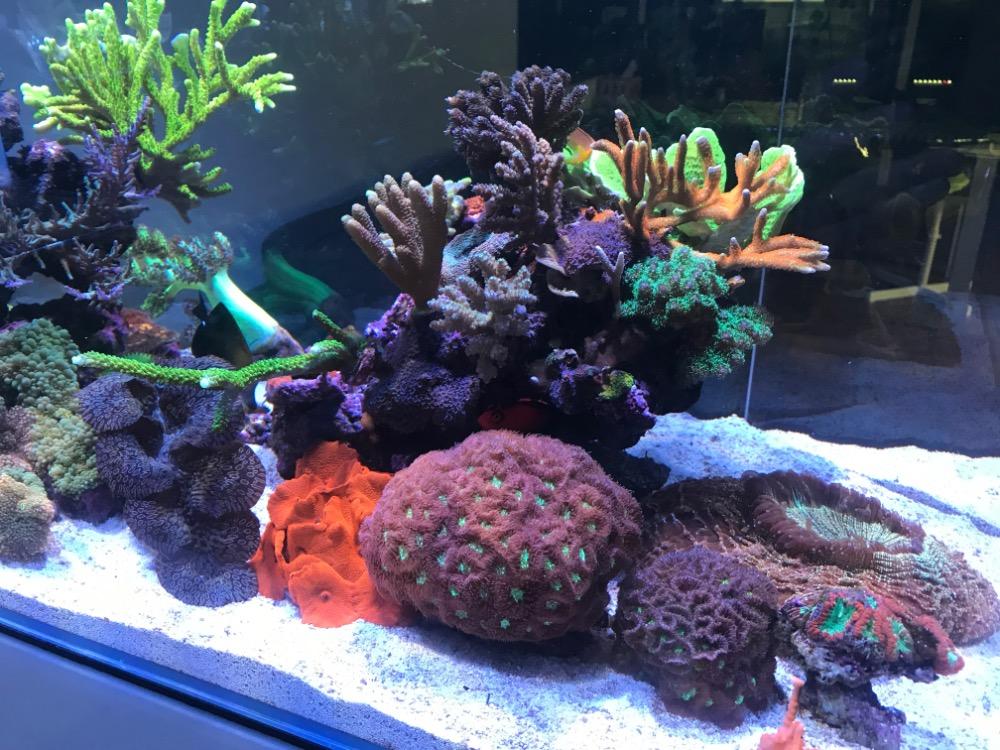
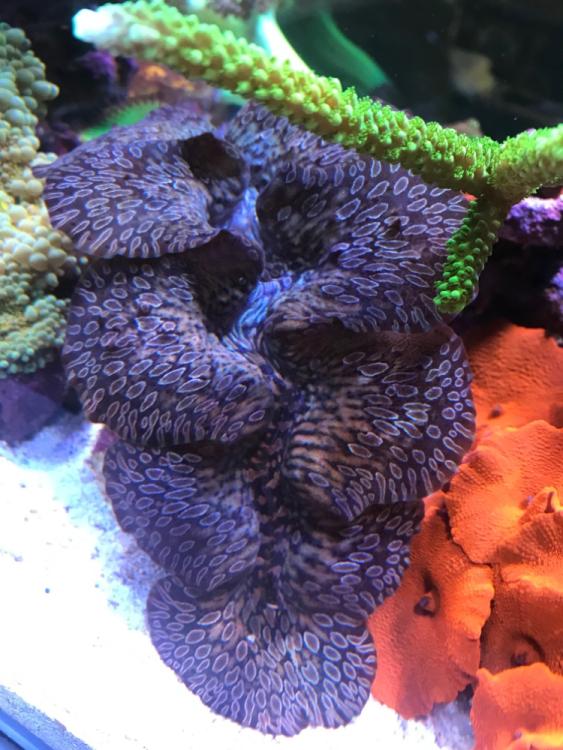
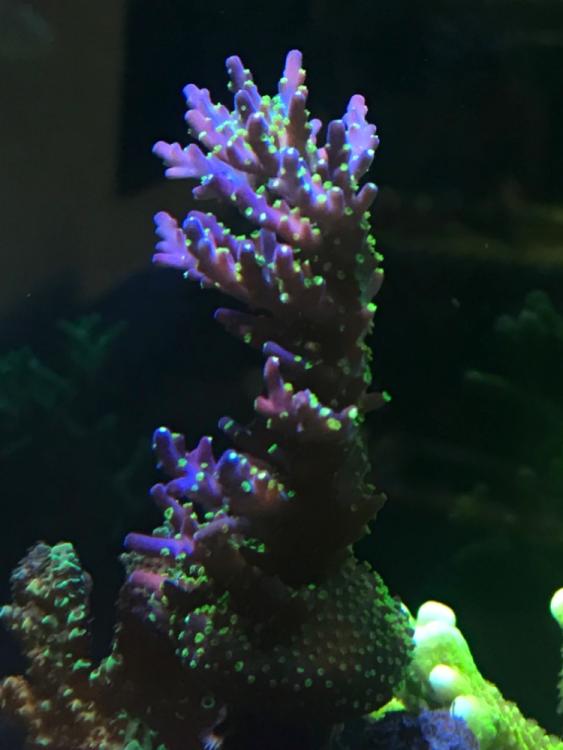
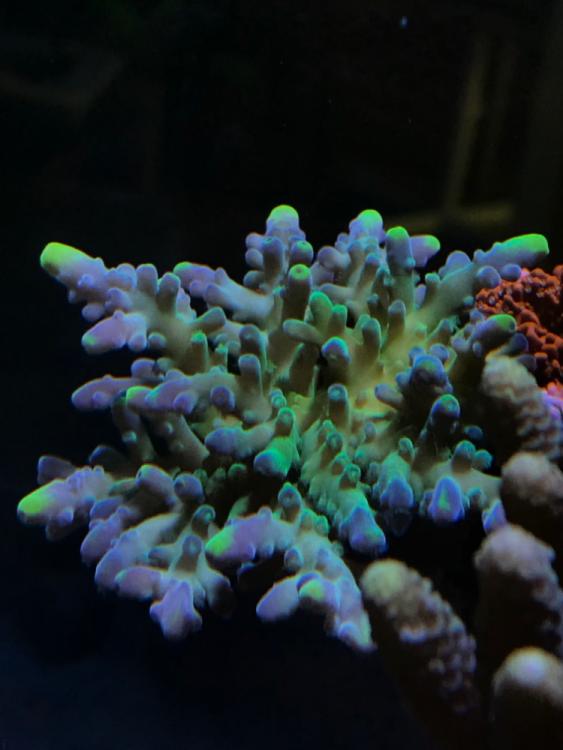
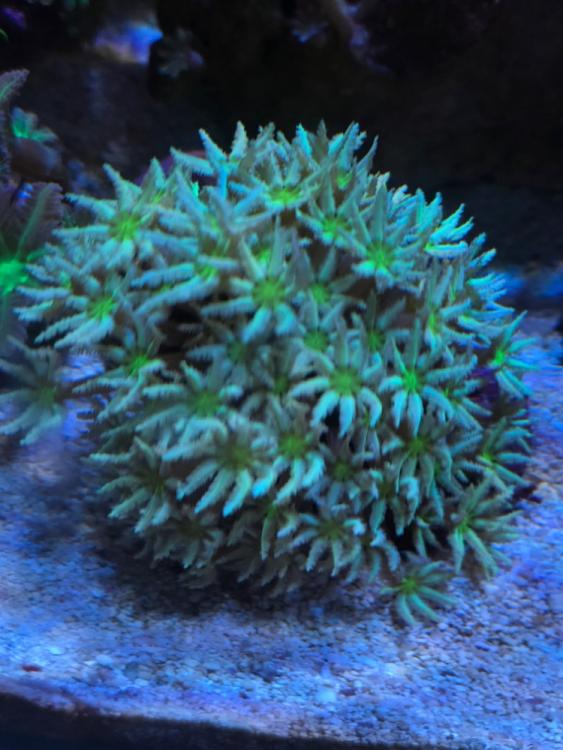


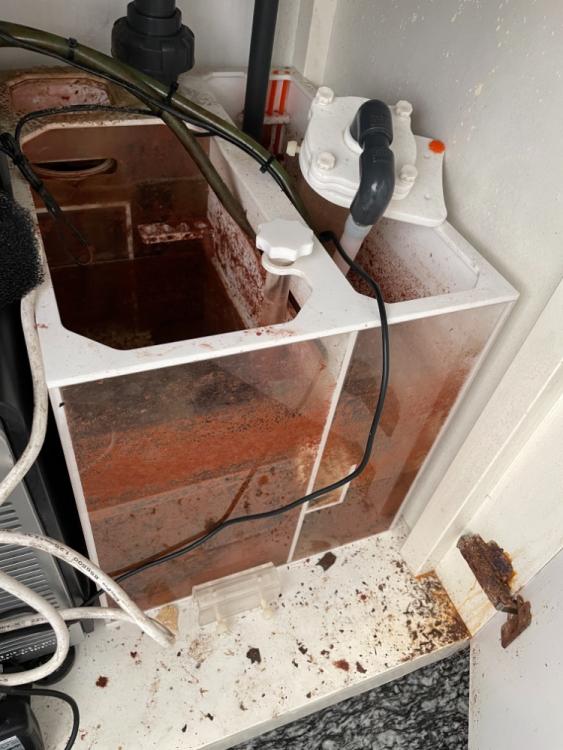
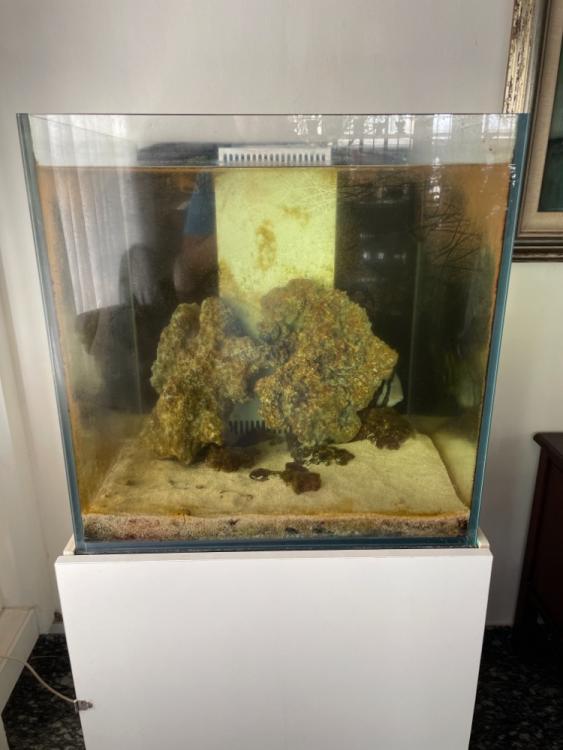
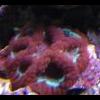
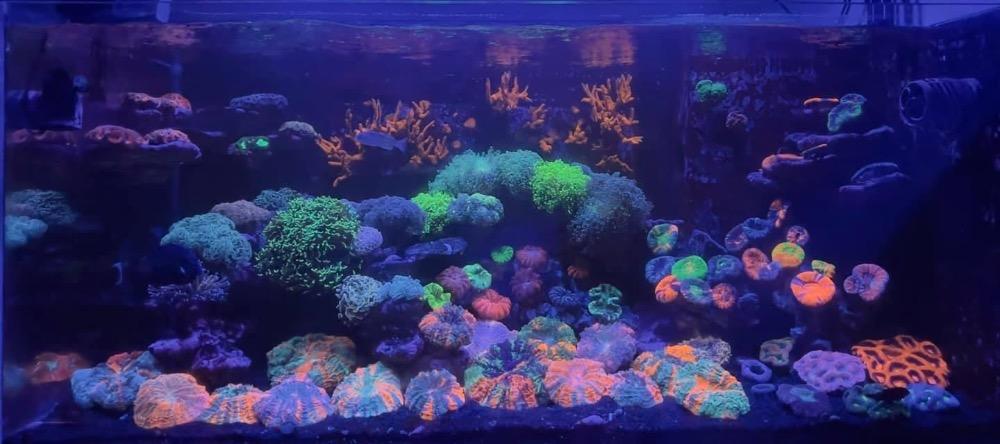
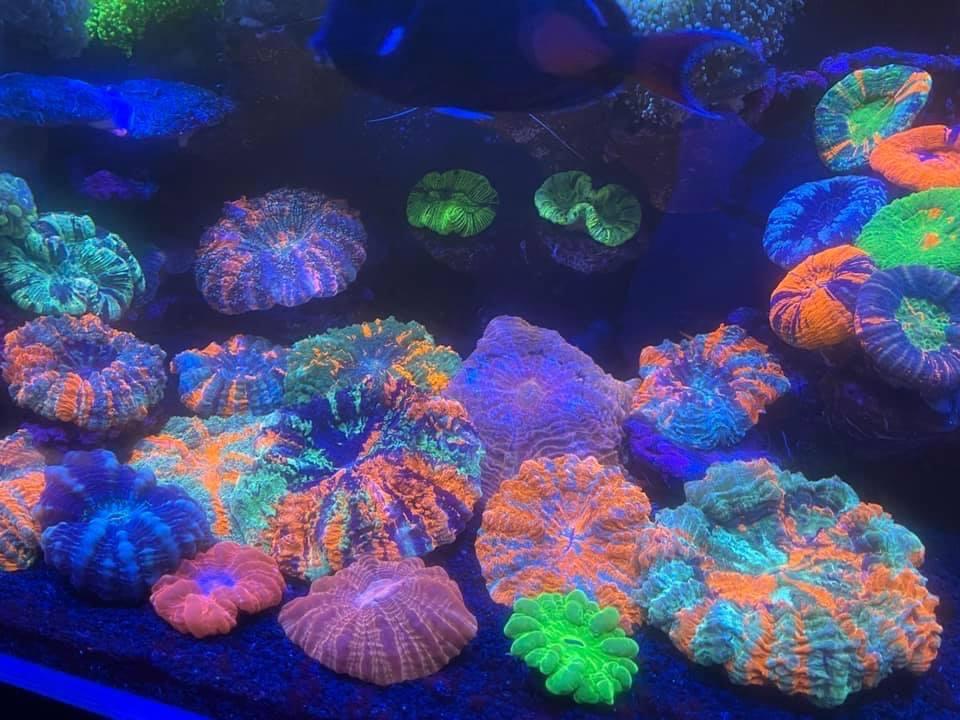
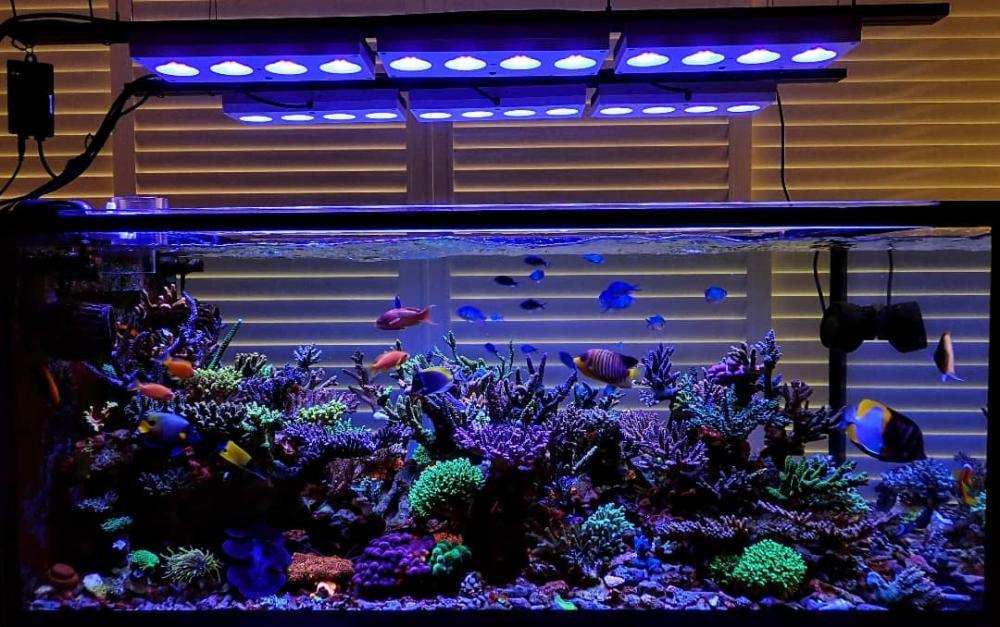


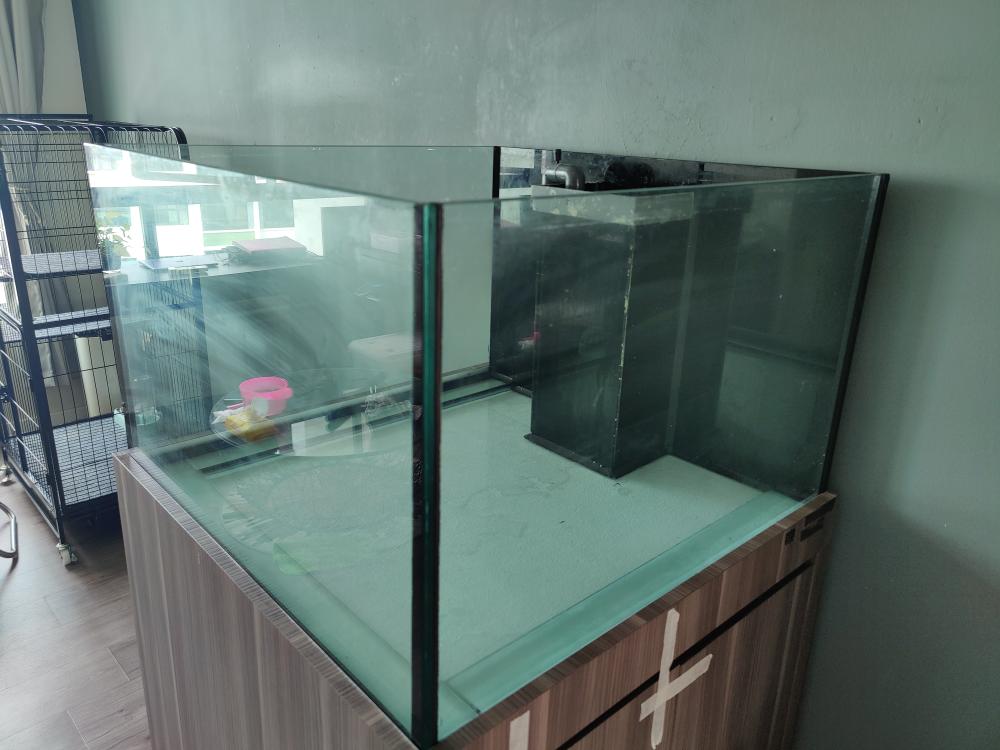

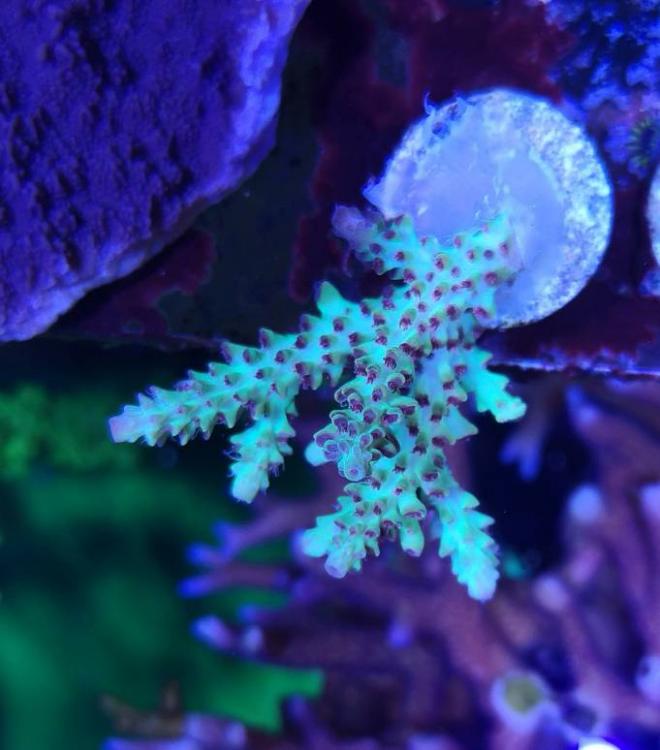
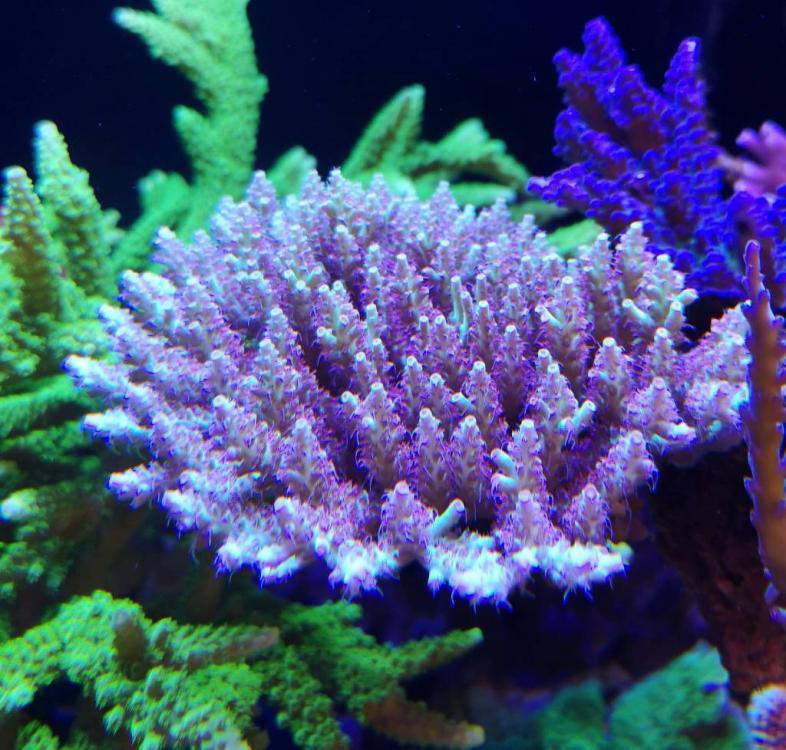

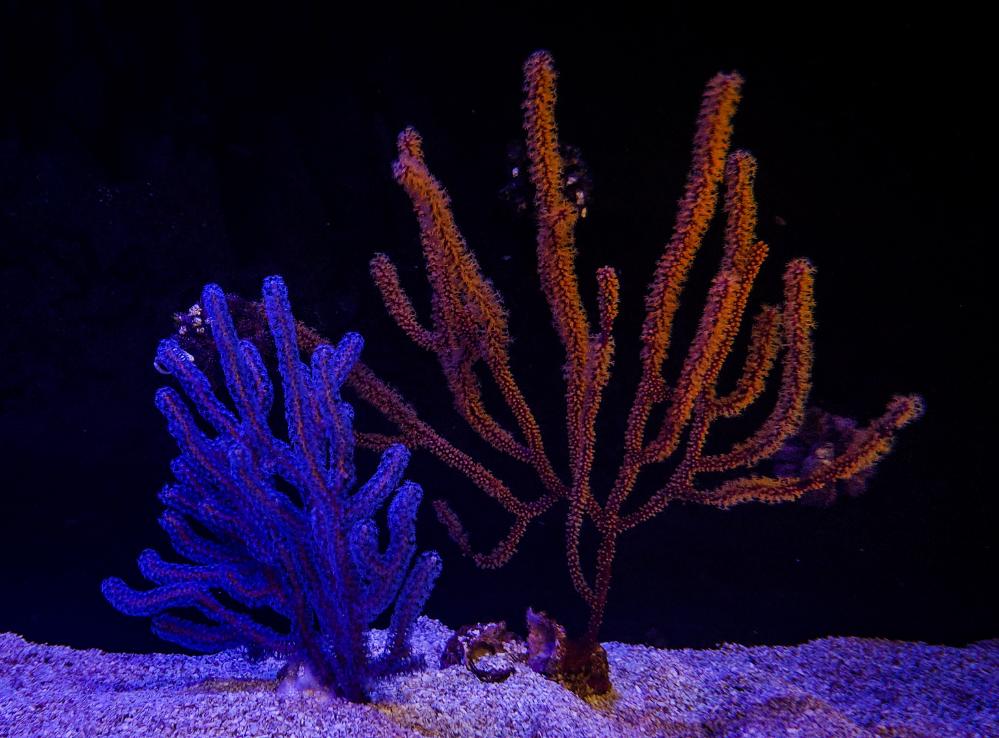
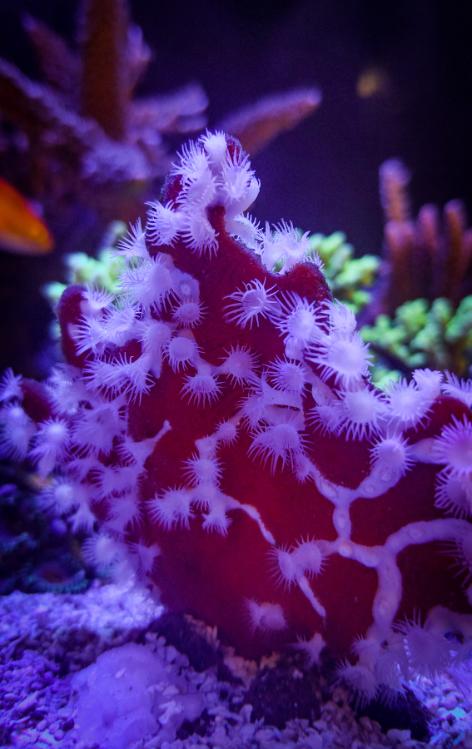
.jpg.44e05592adec361335da722856eda0fe.jpg)
.jpg.425999fed17df22084875224babe5653.jpg)


